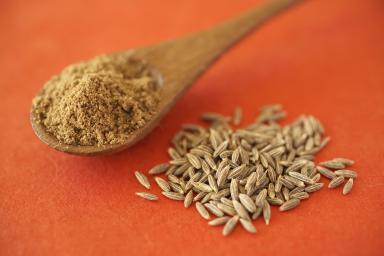Cumin Seed زیره سبز
DESCRIPTION
Cumin is a spice made from the dried seed of a plant known as Cuminum cyminum. A member of the parsley family, cumin is used in Mexican, Middle Eastern and Indian cuisines, among many others.
Cumin is a typical ingredient in chili powder. Cumin is also often found in other spice blends such as garam masala and curry powder.
Cumin can be used in its whole seed form as well as ground. Cumin has a warm, earthy flavor and aroma. Ground cumin is often added to chili, barbecue sauce, baked beans and marinades.
The most common variety of cumin is a brownish-yellow color, although you can also sometimes find black cumin and white cumin. It is a a small, slender, glabrous herbaceous annual, of the parsley family. It usually reaches 25 cm (10 in),and tends to droop under its own weight. The blue-green linear leaves are finely divided, and the white or pink flowers are borne in small compound umbels.

HISTORY
Cumin has been in use since ancient times. Seeds excavated in India have been dated to the second millennium BC. They have also been reported from several New Kingdom levels of ancient Egyptian archaeological sites. In the ancient Egyptian civilisation cumin was used as a spice and as preservative in mummification.
Originally cultivated in Iran and the Mediterranean countries, cumin is mentioned in the Bible in both the Old Testament and the New Testament. The ancient Greeks kept cumin at the dining table in its own container, and this practice continues in Morocco. Cumin was also used heavily in ancient Roman cuisine. In India, it has been used for millennia as a traditional ingredient of innumerable kormas, masalas, and soups, and also forms the basis of many other spice blends.
Cumin was introduced to the Americas by Spanish and Portuguese colonists. There are several different types of cumin but the most well known ones are black and green cumin, both of which are used in Persian cuisine.
Today, the plant is mostly grown in China, Uzbekistan, Tajikistan, Iran, Turkey, Morocco, Egypt, Syria, Mexico, Chile and India. Since cumin is often used as part of birdseed and exported to many countries, the plant can occur as a rare casual in many territories including Britain. Cumin occurs as a rare casual in the British Isles, mainly in Southern England; but the frequency of its occurrence has declined.
